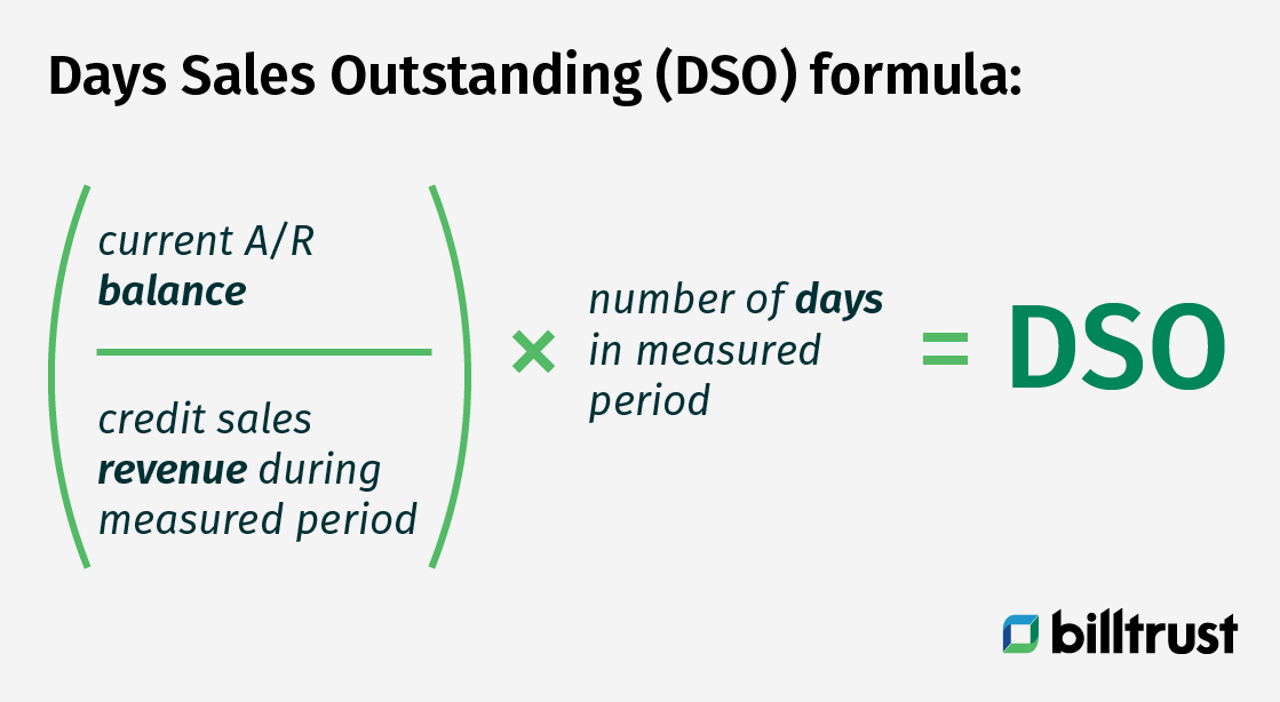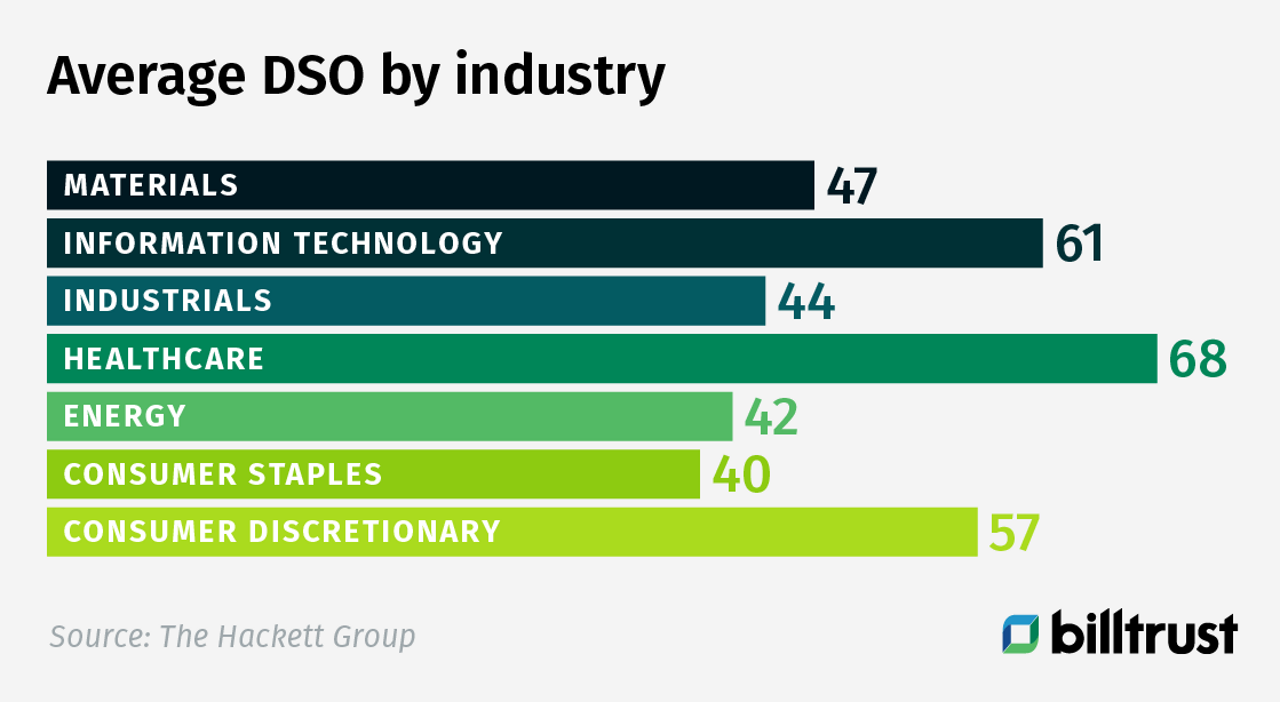What is Days Sales Outstanding (DSO)?
Day Sales Outstanding (DSO) is a measurement of the average number of days a company typically takes to collect revenue once a sale has been completed. It’s a key performance indicator for analyzing accounts receivables. Usually completed on a monthly or quarterly basis (sometimes annually), DSO calculations can be highly beneficial once you understand the process for completing them.
Why is Days Sales Outstanding (DSO) important?
DSO is an indicator of how many average days worth of sales are tied up in receivables. If a company can lower their days sales outstanding (DSO), they can increase the cash available to their business for investments, payroll and purchasing.
How to calculate Days Sales Outstanding
You can calculate DSO by taking your Current Accounts Receivables Balance, dividing it by your Credit Sales Revenue During Measured Period, then multiplying that number by the Number of Days in Measured Period.

Let's break that down into its component parts.
Measured Period:
As we mentioned above, DSO can be calculated on a monthly, quarterly or yearly basis. This will affect the Measured Period portion of the formula. If we are calculating monthly days sales outstanding (DSO), the measured period will be the number of days in that month, likewise for quarterly or yearly DSO.
Current AR Balance:
A company’s AR balance is the dollar value of their accounts receivable.
Credit Sales During Measured Period:
The dollar value of sales made during the period with payment agreed to be made later.
Days Sales Outstanding Calculation Example
Let’s say you run a B2B company that generates about $365 million in credit sales. We can say on average, one day’s sales is about $1 million. If your average accounts receivable (AR) balance for a given month is $48 million, that means you have 48 days worth of sales sitting on your book. DSO for the company is 48 days.
Days Sales Outstanding Limitations
Days Sales Outstanding is often confused for “the time it takes to fully collect unpaid invoices.” Mathematically, there is no direct relationship between DSO and the number of days it takes a company to get paid. DSO is a measurement of the number of an average day’s sales that are tied up in receivables awaiting collection.
What is a Good Days Sales Outstanding Ratio?
The average DSO varies wildly by industry, as demonstrated by recent research from The Hackett Group:

Many companies will try to establish a benchmark for DSO in their industry and compare themselves with that. Companies will also monitor their days sales outstanding (DSO) and take note of any changes as indicators of the changing efficiency of their AR processes.
How days sales outstanding (DSO) may affect your company’s financial health?
When your customers owe your company money, it impacts your cash flow which results in less revenue because past due accounts that surpass 120 days are more difficult to collect. If this happens, the opportunity for you to grow your company may not happen because you won’t have enough cash.
Losing revenue puts you in a vulnerable position because you may have to seek outside financing to increase your cash flow. If you don’t have the funds to pay your monthly operating expenses, your interest payment may increase your cash burden. If you hire a collections company to collect outstanding receivables, they may ask for a percentage of the balance.
How to improve your DSO
Companies can lower DSO is by automating and optimizing their order-to-cash process.
- AR automation can result in invoices that are sent and received more quickly, prompting quicker payment.
- Flexible and automated payment acceptance processes may motivate buyers to pay via faster channels i.e., an ACH payment vs a mailed paper check.
- Automated cash application solutions apply payments more quickly.
- Automation-assisted collections solutions help collectors do their work more efficiently, leading to faster payments.
It’s important to calculate and track your days sales outstanding (DSO) regularly so that you may identify trends you may have previously overlooked. If the numbers increase, it may indicate that the amount of time your manual process of collecting receivables takes more time than expected. Remember, the longer you take to collect payments may negatively impact your company’s cash flow. That’s why you may want to consider automating your accounts receivable process. Not only does automation improve the days to collect, but it may help you to avoid a high DSO.
How to use DSO more effectively
DSO is valuable as a shorthand indicator that helps a company understand how their accounts receivable collections process compares to others in their industry. Changes in DSO (up or down) reflex changes in key inputs from a company's balance sheet.
The best way to use DSO is to put it in context. And the Collection Effectiveness Index (CEI) is one of the best contextual indicators for DSO that there is. Learn more about CEI.
Want to learn more about how accounts receivable automation from Billtrust can help lower your company’s DSO? Simply fill out the contact form.

